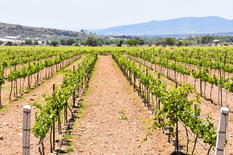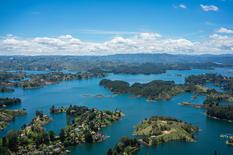
What is a pathway?
A pathway is a transformational process that delivers long-term emissions reductions and sustainable development in collaboration with local communities, businesses and other key actors. It starts with a government’s long-term greenhouse gas emissions reduction goal and then works backwards to identify the technologies, infrastructure and investments that will be required to achieve it.
A pathway gives state and regional governments choice so that they can make informed decisions on the best way to reduce emissions while addressing interconnected social, economic, and environmental issues related to or exacerbated by the climate crisis.

Pathways Framework
The Pathways Framework is a step-by-step toolkit for ambitious state and regional governments committed to decarbonising their economy and achieving the goals of the Paris Agreement.
It provides a flexible and tailored approach that supports the achievement of net zero emissions and promotes intra-governmental and stakeholder collaboration to embrace opportunities and overcome challenges.
The Framework was developed through the Climate Pathway Project, which supports state and regional governments to develop a transformational process, or ‘pathway’, to reducing emissions.
It compiles best practice and lessons learned from the six project regions: Amazonas, Mato Grosso, and São Paulo (Brazil), Quintana Roo and Querétaro (Mexico) and Madre de Dios (Peru).

Pathways Communities
Our Pathways Communities of Practice allow state and regional governments to learn from each other and co-create visions as they develop and refine their long-term emissions reduction plans.
We currently have Pathways Communities available in Spanish and Portuguese, which you can visit by clicking the links below.
Our pathways projects

Deforestation-free cattle ranching in Madre de Dios, Peru
Using nature-based solutions in the Peruvian Amazon to transform deforested pasturelands into silvopasture systems that benefit the environment and farmers.

Just Transition Taskforce
Accelerating progress towards an equitable Net Zero Future.
Previous pathways projects

Climate Pathway Project
Supporting state and regional governments to develop a transformational process, or 'pathway', to reduce emissions.

Road to Carbon Neutral
Empowering government officials, entrepreneurs, journalists and civil society from local territories in Colombia to create decarbonisation pathway visions for the energy and transport sectors.


